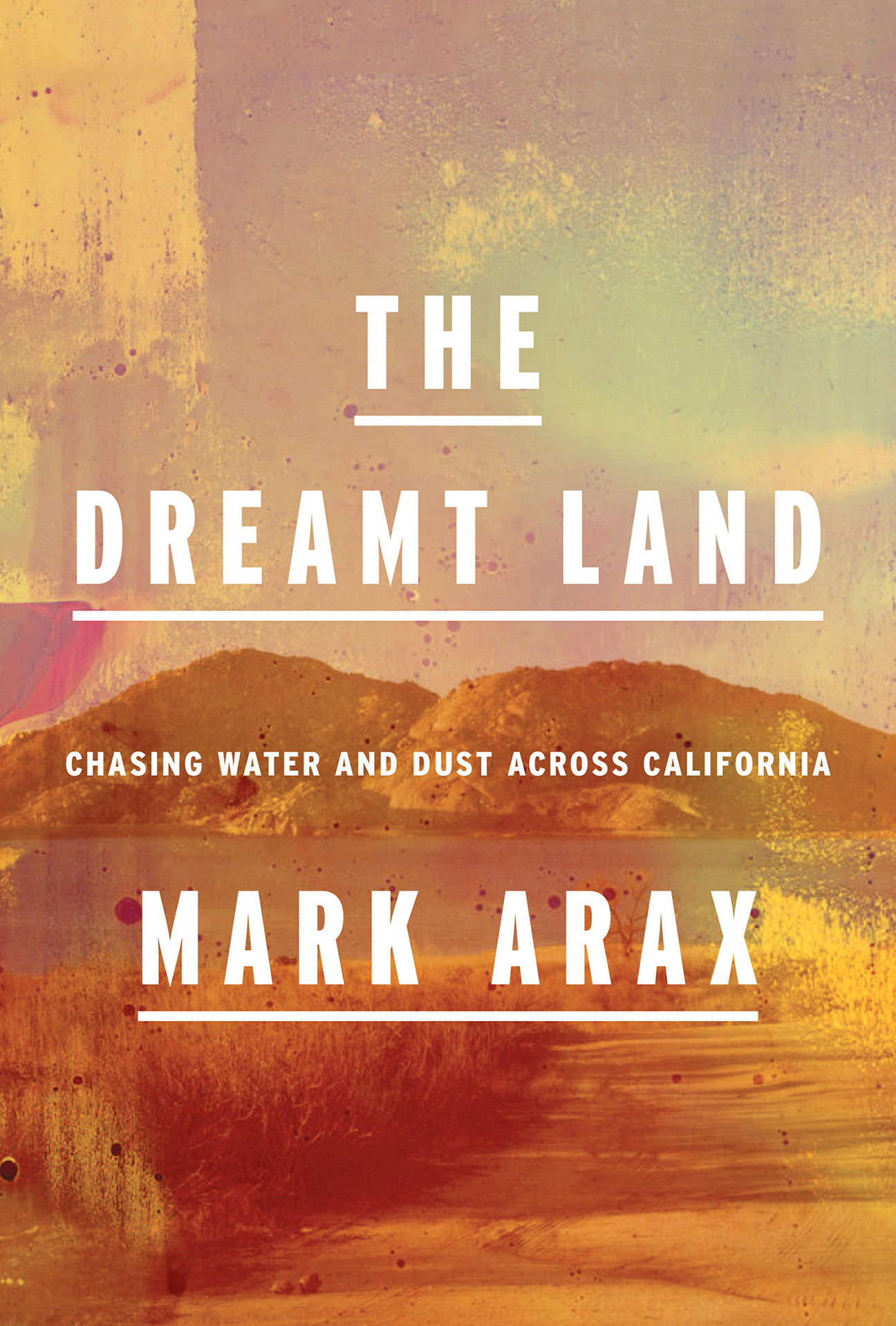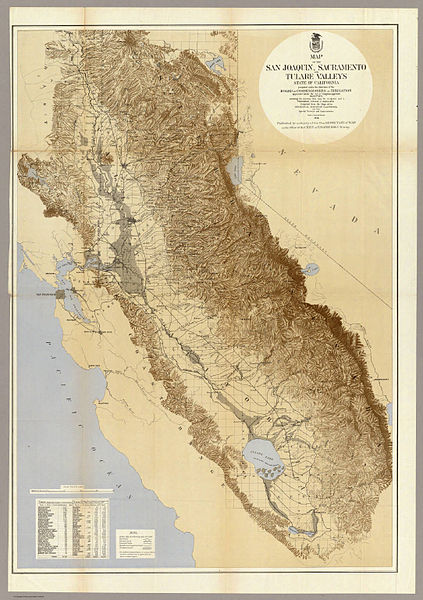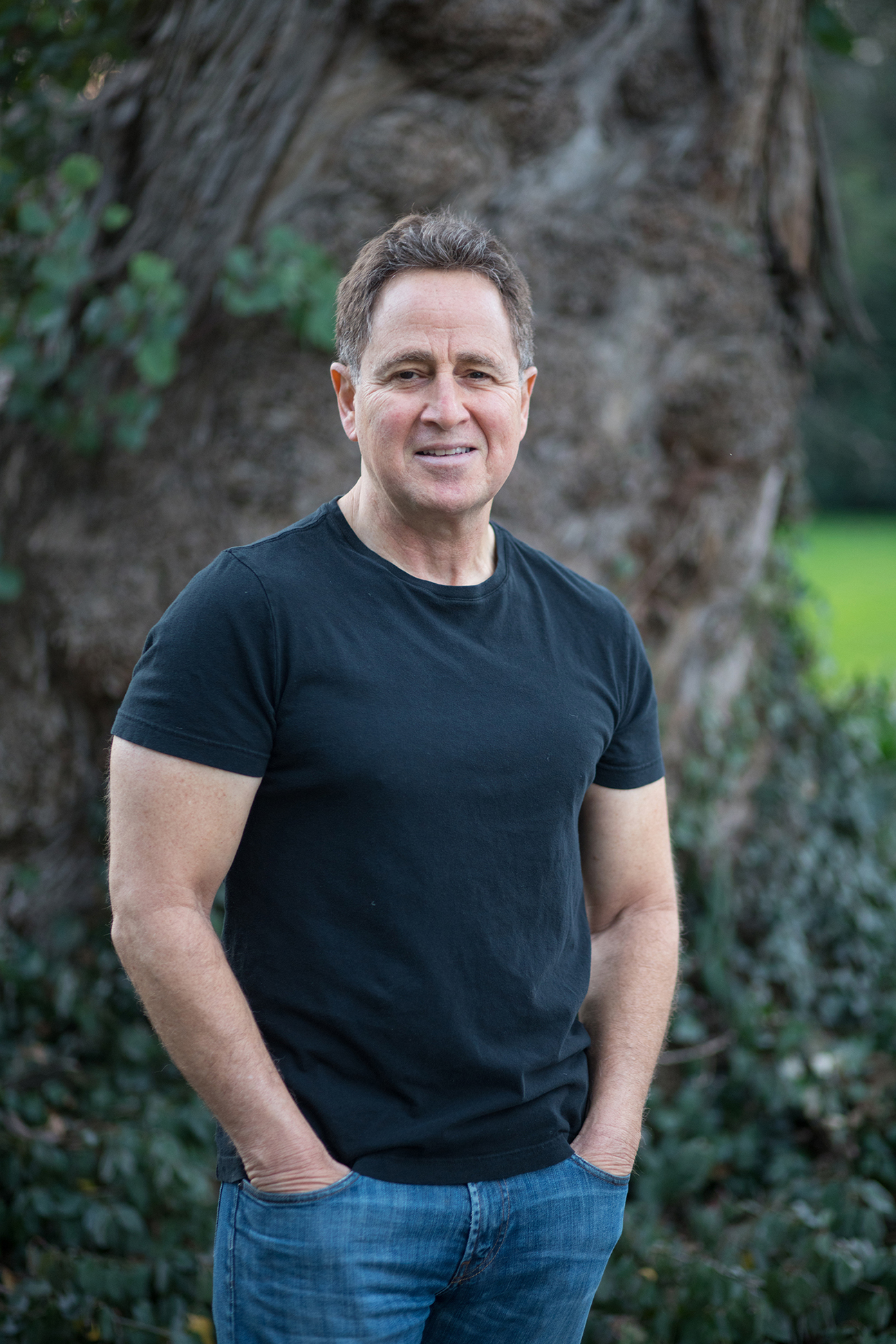Orchards of San Joaquin Valley | Adobe Stock
By Royal Calkins
Last fall I changed up my route to my hometown in the San Joaquin Valley south of Fresno. Instead of crossing Pacheco Pass and tolerating the terribly familiar Highway 99, I went south from Salinas and hooked a left over the lovely coastal range on Highway 198. After descending into the oil and earthquake town of Coalinga, I rolled onto the valley floor and a big surprise.
The way I remembered it, Highway 198 on the San Joaquin’s westside had always bisected a desolate stretch of alkali flats, scorched earth barely able to support lizards and tumbleweed. Miles and miles of beige and white scab land overlying hardpan, acre after acre that had never felt a plow.
On this day, however, I found myself surrounded by the green leaves of thousands upon thousands of almond trees. Thousands of acres of almond trees with an occasional block of pistachio or stone fruit, even some oranges here and there. Past Interstate 5 and on into Lemoore, the incongruous home of an artificial surfing beach, and eastward into Hanford.
I knew valley farmers had planted enough almonds in recent years to dominate the world nut market but I had not witnessed the scope. I took a couple side roads to make sure the orchards were as big as they seemed. They were bigger.
I noticed that most of the trees were young, half the size they would reach if they weren’t severely pruned. This meant that most of the orchards had been planted in this decade — in the midst of one of the longest droughts of recent California history.
The planting of permanent crops such as almonds nurtured by water sucked from deep below the San Joaquin is at the core of a new book by Fresno author Mark Arax, “The Dreamt Land.”

It is, in many ways, a horror story, the tale of how the rich get richer while the regulators, what few there are, look away.
It’s the story of the middle class and the poor getting hosed because all that unregulated pumping is causing much of the valley floor to drop, to subside, to the point that roads, curbs, gutters, sidewalks and even the cement-lined irrigation canals buckle and break.
If you figure that the farmers, the hedge funds and the corporations that installed the pumps will pay to repair the infrastructure, you’ve been out in the sun too long. The valley’s ag industry and its enablers have used all manner of public relations stunts to convince the world that they were brought to their knees by the drought and an unsympathetic water bureaucracy. The fact is they were merely playing sleight-of-hand tricks, diverting people’s attention away from the drilling rigs that went past 1,000 feet deep and then past 2,000. At the giant Boswell operation of Kings County, Arax writes, some of the wells are as deep as two Empire State buildings.
They diverted our attention as skillfully as their forefathers diverted the flows of rivers — the Sacramento, the San Joaquin, the Kings and Kern — to make the valley bloom with cash crops. Wheat, at first, and then row crops and cotton and grapes, so many grapes that the tires of trucks hauling loads to the crusher could almost get stuck on the juice-covered approach roads like flies on flypaper.
Though the circumstances in the Salinas Valley are not identical to the San Joaquin’s, Arax says that what he found on his side of the coast range should serve as a giant red flag for agriculturalists and policymakers here.
Salinas Valley growers depend primarily on water drawn from the Salinas River but there has been a rush in recent years to drill more and more wells into the water basin that underlies the valley, a basin already so overdrafted that county officials have imposed a moratorium on construction projects that would depend on that water.
“If you’re sinking more wells into that valley, you’ve got trouble,” Arax said in a phone interview.
After ignoring the issue for so long, the state government has reluctantly started the process of regulating groundwater pumping, but in the Salinas Valley and elsewhere the bureaucracy that will eventually do that is both slow in formation and dominated by ag interests and politicians closely wedded to those interests.
Arax estimates it will take a decade before the regulations amount to anything. He also notes that the issue of seawater intrusion into the aquifer could make the situation in the Salinas Valley much more difficult to address and the regulation of it more complicated.
He writes, “To keep the vast underground lake from petering out, the state has decided to govern groundwater pumping for the first time in (the state’s) 164-year existence. Waiting that long to regulate a precious resource doesn’t sound right to anyone who knows California. We were the first state to equip every car with a device that reduces smog, the first state to mandate cutting greenhouse gases by a third.
“Businesses are leaving California in droves because of environmental constraints, or at least that’s what we’re being told by those who don’t want the protections. Yet pumping the aquifer remains a farmer’s inalienable right. When you consider the size of the farms here, that notion isn’t so quaint. In fact, California is one of the last remaining states still committed to a carte blanche notion of groundwater.”

“The Dreamt Land” is a monumental work by a tireless researcher and remarkable writer. It is a thick volume, 528 pages, and it is thick with detailed accounts of California’s hydro history, political and economic history, and engaging stories of the men and women who changed the course of rivers and, in many cases, stole water from their neighbors and competitors.
I should pause here to acknowledge that I have known Mark for nearly four decades, both as a friend and as a competitor. I don’t like to think about how often he, as the Los Angeles Times’s lone correspondent in the valley, kicked the butts of the much larger force of journalists toiling alongside me at the Fresno Bee. I also have edited several books for an Arax-founded foundation, West of the West.
While I was predisposed to enjoy the book, it far exceeded my expectations. He spent five years on this and it was well spent.
Many reviewers will likely compare the book to Marc Reisner’s 1986 classic, “Cadillac Desert:The American West and its Disappearing Water.” Arax’s work is narrower in scope, limiting its focus to California, but that actually enabled him to dig deeper into his topic.
One of Arax’s previous books, “The King of California,” presaged his new volume by chronicling how Central Valley cotton tycoon J.G. Boswell persuaded the federal government to dam a river that previously tumbled freely out of the Sierra.
In “The Dreamt Land,” Arax writes colorfully and knowledgeably about the cattle baron Henry Miller, racist railroad man Leland Stanford and many others made rich by their manipulation of soil and water. He writes at length about the Gold Rush and the way clotted runoff from the mining nearly destroyed the rivers below. He writes about cloud seeding, crooked politicians, raisins, oranges, his Armenian forebears and the theft of the Owens Valley water made famous in the film “Chinatown.”
He tells the stories of farmworkers who benefit from the jobs made possible by the expansion of cropland in the valley but he also writes about mechanization that threatens those jobs.
The valley’s ag industry and its enablers were merely playing sleight-of-hand tricks, diverting people’s attention away from the drilling rigs that went past 1,000 feet deep and then past 2,000.
One chapter is devoted to Stewart and Lynda Resnick, who manage their pomegranate, almond and water kingdom from their Beverly Hills mansion. They deserve points for the serious philanthropy they have performed for the struggling people of Lost Hills, the center of their empire, but they lose points for the way their Paramount Farms took control of the nation’s largest underground water supply, even managing to use $74 million in taxpayer money to pull off the heist.
(Some Central Coast residents may remember Stewart Resnick as the big-time campaign contributor who helped persuade state ag officials to spray pheromones over the area to control the light brown apple moth in 2007, at least partly because one of his many companies, Suterra Inc., made the spray.)
The Resnick operation is so immense — they are California’s largest landowners — that the orchard managers are instructed to not make too much of a fuss about maximizing yield. Careful pruning of the almonds can increase production by 30 percent but mechanized shaping of the branches is easier and quicker. What’s a few hundred tons of nuts when you’re harvesting many hundreds of tons?
Arax writes with passion about the poor families of Fairmead, an old African-American settlement near Madera, whose shallow wells instantly became useless when new, powerful pumps were switched on to suck water from a deep aquifer. And about how the Farm Bureau tries to mollify the victims by making deliveries of bottled water.
He writes about the winemakers, whose product, of course, is mostly water.
“I’ve gone to St. Helena, in the Napa Valley, and seen where a vineyard atop Howell Mountain slid into the main reservoir for the town’s drinking water. So many winemakers — mom-and-pop outfits, global corporations, venture capitalists who’ve grown weary of fly-fishing in Montana — have planted rows of Cabernet and Sauvignon Blanc on and around the mountain that it now carries its own appellation, a terroir of climate, elevation and rocky soil that creates tannin-rich reds with a feral taste, they say. Who knows how much water the winemakers are siphoning from the Napa River’s watershed? Certainly not the county of Napa, which is allowing millions of tons of dirt to be moved and streambeds to be altered in the name of ‘Wine Country living.”

Arax writes in great detail about how farms consume more than half of the California rainfall and surface water that doesn’t flow to the sea. He writes in detail about the giant Westlands Water District in the San Joaquin Valley, how it subsists on water made available at great discounts by the federal government, how many of the district’s members also made themselves rich by not planting cotton, and how the farms there created huge concentrations of toxic chemicals and salts that the taxpayers have had to clean up.
The book is enriched by Arax’s long and personal connection to the valley and those who cultivate it. His family has been involved in farming for generations and, like many Armenians in the valley, he is linked by blood or friendship to much of the central San Joaquin’s raisin industry.
On a Saturday morning, the car radio blasting the hot air of a cockeyed presidential campaign, I drive past the packinghouse where I boxed peaches and plums as a kid and come to a stop in a vineyard outside Selma, where the raisin harvest is about to begin. The thermometer has shot beyond one hundred degrees for fourteen straight days. Three farmworkers have died in this heat. The vines haven’t drunk water for thirty days, but that is by design. The dry condition lets the farmer reconfigure the dirt rows between the vines, building a slight slope that angles toward the sun and allows water, in the event of a freak rain, to drain off the grapes baking on paper trays.
Down the dirt road that runs through the vineyard, Honda Civics on their third owners line the path. I step out onto the fine powdery loam and pick a dusty row to walk. Not a worker can be seen. All is quiet.
A few yards inside, I hear the faint words of banda and follow the music to a cell phone in the back pocket of a skinny young man. He’s wearing worn cowboy boots, torn jeans, one long-sleeved shirt over another and a San Francisco 49ers cap splattered in grape juice mixed with juice. He parts the curtain of cane and leaf and steps completely inside the vine, hacking away at its purple bunches with one hand and letting the bunches plop into a plastic tub he holds with the other. It takes him forty-eight seconds to fill the tub… .
The sun isn’t quite overhead but it already feels like a furnace. There is one row where a grape picker has laid out the paper trays far in advance. This strategy strikes me as risky, for it has the potential to break a man’s spirit, to underscore the quarter mile still to go. But as I watch the tiny figure covered in hoodie, hat and bandanna, I can see that it’s ingenious. It allows the worker to build toward a trance of picking and time. I walk over to introduce myself and only then do I see that this picker is a woman. Her name is Maria, and she has been working in the orchards and vineyards for eleven years. Her husband works beside her. Together they can make $175 a day. “I don’t work as fast as used to,” she tells me. “I am thirty years old already.”
The book was published just this month by Knopf, and Arax is busily retracing his reporting route throughout the state for book readings and autograph sessions. I am hoping to help him set up a session on the Central Coast, and I certainly will let people know if and when that occurs.
Have something to say about this story? Send us a letter or leave a comment below.
The Pure Water Monterey project that will attempt to treat and recycle a mix of human sewage and contaminated agriculture waste is a direct assault on the Seaside Basin. The Valley Ag. barons had already contaminated the larger Salinas Basin, so it needed access to the Seaside basin, which has not yet been declared contaminated. Access to the Seaside basin is necessary for the validity of the permit to recycle the toxic mix. Obviously that doesn’t mean that the water will be safe for potable purposes.
The key to the ruse is that because toxic agriculture waste has never been treated for potable use, dissolved solids that get thru the process are truly “unknown.” there is zero data about what they will contain. The tests that the project will apply are simply the tests for river water and non-polluted sources.
Has the Seaside basin been honestly analyzed for contamination. Because it sits under Ft. Ord, it is subject to wildly toxic matter via rains and seepage, but contamination has not been confirmed because the basin has not been tested for the obvious suspected contaminants. IMO, this game will blow up in the face of the Ag. barons, the basin will be a confirmed contaminated site and the Pure Water Monterey project will bankrupt. Good riddance. Royal, thank you for reviewing this important work.
Thank you for bringing this book to my attention. Ten years ago I loved his book The King of California. I still think about it. I ordered the book on Thursday, got it by Saturday, and finished it by Tuesday. I could it out it down. I live in Gilroy, have worked for row crop and cherry farmers for over 30 years, and know an engineer on the San Luis project (in his 90’s now). One of my farmers grew garlic with Price Giffen. Farmers are the stuff of legend. I am waiting for a book like this about the lettuce growers in Salinas.